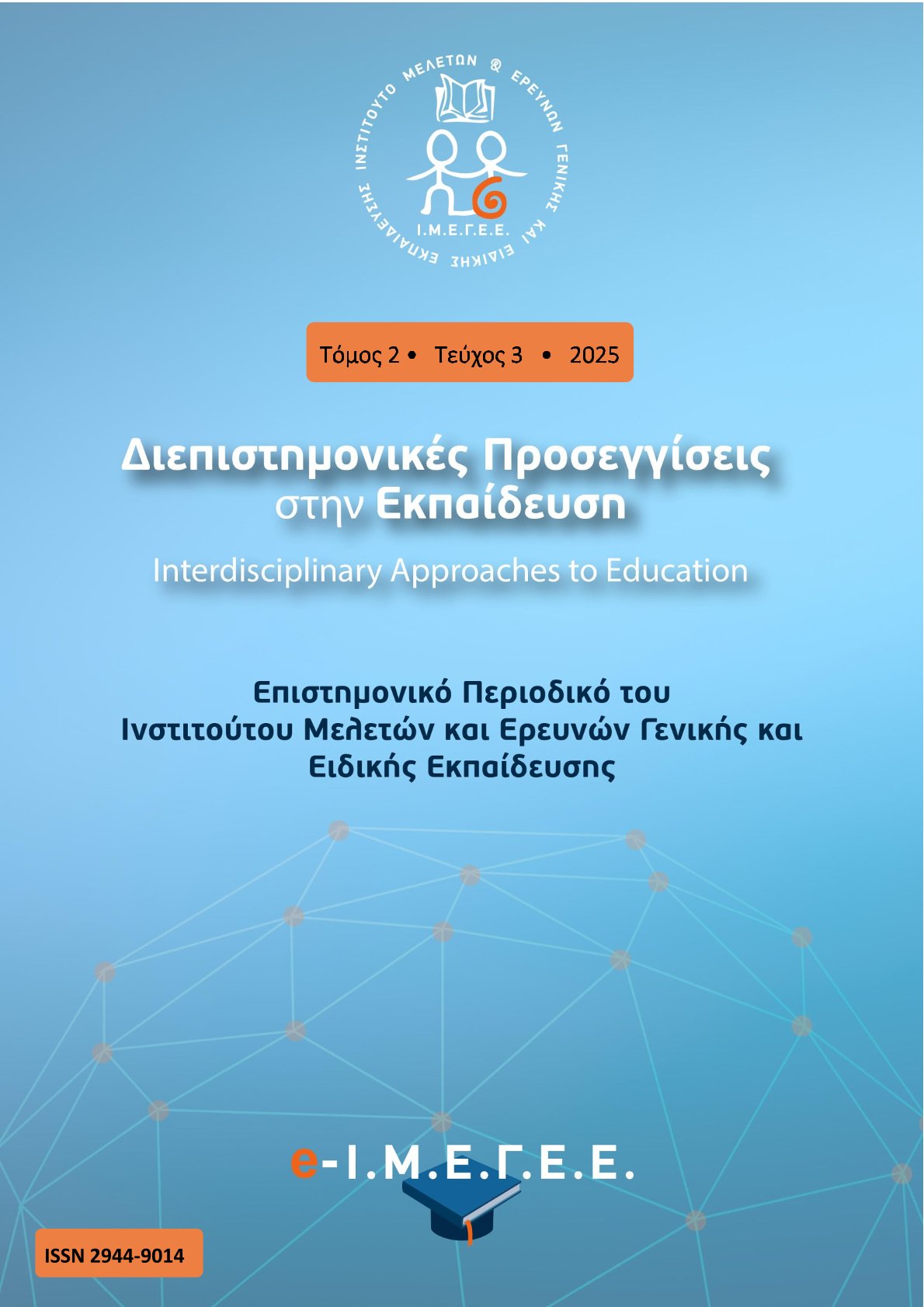Η συμβολή της αδερφικής σχέσης στην κοινωνικοσυναισθηματική ανάπτυξη κατά την παιδική και την εφηβική ηλικία

Περίληψη
Η παρούσα βιβλιογραφική μελέτη έχει σκοπό τη διερεύνηση των παραγόντων που επηρεάζουν την ποιότητα της αδερφικής σχέσης και τη συμβολή αυτής στην κοινωνικοσυναισθηματική ανάπτυξη κατά την παιδική και εφηβική ηλικία. Τα αποτελέσματα της μελέτης έδειξαν ότι τα αδέρφια επιδρούν το ένα στην κοινωνικοσυναισθηματική ανάπτυξη του άλλου. Καθώς τα ερευνητικά δεδομένα για την αδερφική σχέση είναι αρκετά περιορισμένα, τα ευρήματα αυτής της μελέτης, μπορούν να αξιοποιηθούν από τους επιστήμονες της Παιδαγωγικής, της Ψυχολογίας και της Κοινωνιολογίας, ώστε να αναδειχθούν καινοτόμες θεωρητικές προσεγγίσεις για τους παράγοντες που επηρεάζουν την ποιότητα της αδελφικής σχέσης και τους τρόπους διαχείρισης μέσα στο οικογενειακό περιβάλλον.
Λεπτομέρειες άρθρου
- Πώς να δημιουργήσετε Αναφορές
-
ΠΛΑΣΚΑ Α. (2025). Η συμβολή της αδερφικής σχέσης στην κοινωνικοσυναισθηματική ανάπτυξη κατά την παιδική και την εφηβική ηλικία. Διεπιστημονικές Προσεγγίσεις στην Εκπαίδευση, 2(3). https://doi.org/10.12681/.42765
- Ενότητα
- Articles
Ενημέρωση για τα πνευματικά δικαιώματα
Οι συγγραφείς των άρθρων που δημοσιεύονται στο περιοδικό διατηρούν τα δικαιώματα πνευματικής ιδιοκτησίας επί των άρθρων τους, δίνοντας στο περιοδικό το δικαίωμα της πρώτης δημοσίευσης. Άρθρα που δημοσιεύονται στο περιοδικό διατίθενται με άδεια Creative Commons 4.0 και σύμφωνα με την άδεια μπορούν να χρησιμοποιούνται ελεύθερα, με αναφορά στο/στη συγγραφέα και στην πρώτη δημοσίευση για μη κερδοσκοπικούς σκοπούς και με δικαίωμα τροποποίησης μόνον με παρόμοια διανομή (αν αναμείξετε, τροποποιήσετε, ή δημιουργήσετε πάνω στο υλικό, πρέπει να διανείμετε τις δικές σας συνεισφορές υπό την ίδια άδεια όπως και το πρωτότυπο).
Απαγορεύεται η αντιγραφή, αποθήκευση και διανομή της παρούσας εργασίας, εξ’ολοκλήρου ή τμήματος αυτής, για εμπορικό σκοπό. Επιτρέπεται η ανατύπωση, αποθήκευση και διανομή για σκοπό µη κερδοσκοπικό, εκπαιδευτικής ή ερευνητικής φύσης, υπό την προϋπόθεση να αναφέρεται η πηγή προέλευσης και να διατηρείται το παρόν µήνυµα. Ερωτήματα που αφορούν τη χρήση της εργασίας για κερδοσκοπικό σκοπό πρέπει να απευθύνονται προς τους συγγραφεα-είς. Οι απόψεις και τα συμπεράσματα που περιέχονται σε αυτό το έγγραφο εκφράζουν το-ους συγγραφέα-είς και δεν πρέπει να ερμηνευθεί ότι αντιπροσωπεύουν τις επίσηµες θέσεις του Ινστιτούτου Μελετών και Eρευνών Γενικής και Ειδικής Εκπαίδευσης (Ι.Μ.Ε.Γ.Ε.Ε.).
Copyright notice
Authors retain copyright and grant the journal right of first publication with the work simultaneously licensed under a Creative Commons Attribution NonCommercial License that allows others to share the work with an acknowledgement of the work's authorship and initial publication in this journal.


